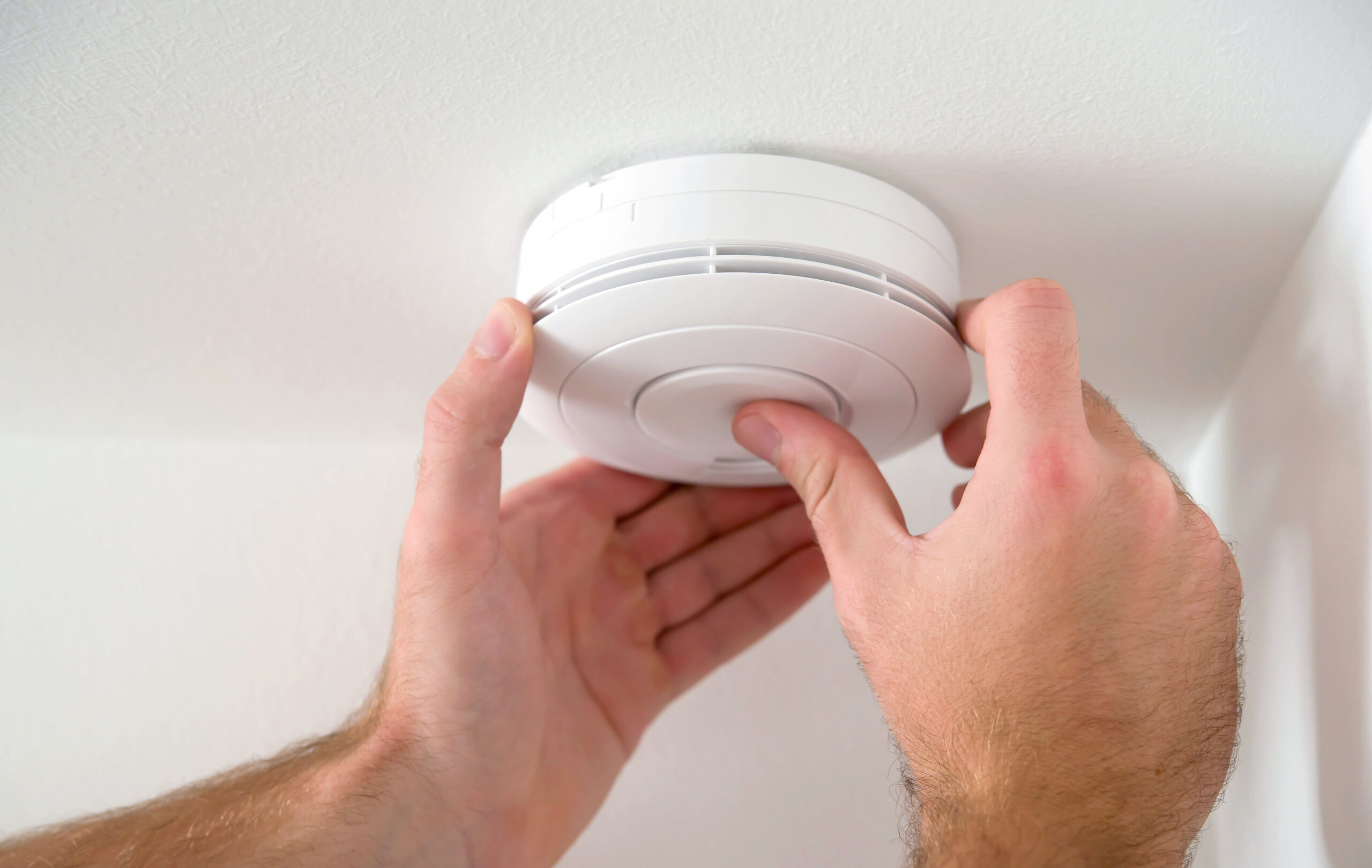Do I Have Carbon Monoxide Poisoning?

Carbon monoxide (CO) is a colorless and odorless gas that is a by-product of incomplete combustion of carbon-containing materials. It originates from such sources as gas-fired appliances, wood stoves, and blocked chimneys. Its unnoticeable characteristics are risky, making the comprehension of its sources and indoor air quality relevant. HVAC services are helpful in CO detection and elimination. Regular inspections and maintenance guarantee that heating systems and appliances work well, reducing CO accumulation risk. We also recommend carbon monoxide detectors, which are an important safety measure against this invisible danger.
What Is Carbon Monoxide Poisoning?
Carbon monoxide poisoning is a serious problem caused by breathing CO gas. This poisonous gas binds with the hemoglobin in the blood, forming carboxyhemoglobin and reducing the amount of oxygen delivered to the body’s organs and tissues. With an increased CO in the blood, oxygen transport decreases, resulting in tissue damage and possibly fatal consequences. The cunning nature of CO poisoning is its silent progress that someone may initially miss until symptoms escalate.
CO emissions mainly come from malfunctioning or incorrectly used fuel-burning appliances like furnaces, water heaters, and room heaters. Other common sources are blocked chimneys, exhausts from attached garages, and gasoline generators working too close to the living or working environments. Awareness and vigilance of these CO sources are very important for preventing CO accumulation.
Recognizing the Symptoms
CO poisoning has a wide range of symptoms that can be confused with common illnesses, making early diagnosis difficult. The initial symptoms include headache, dizziness, weakness, stomach upset, vomiting, and chest pain. With the increase in exposure, the symptoms can worsen to loss of consciousness, arrhythmia, seizures, and, in very severe cases, death. The advancement from mild to serious manifestations can be fast, depending on the CO level and length of exposure. Identifying these early signs and acting promptly by evacuating the area and seeking fresh air can be lifesaving.
If you have underlying health problems such as heart disease, symptoms may be more severe and manifest faster. Pets can also be early indicators of CO presence in a home; they might become unresponsive, lethargic, or have seizures. Awareness and taking immediate action upon observing any symptoms of CO exposure can greatly minimize the risk of fatal poisoning.
Causes and Risk Factors of Carbon Monoxide Exposure
CO concentrations occur in indoor settings mostly through malfunctioning or incorrect use of appliances that burn fuel. Poor ventilation makes the problem worse; hence, CO accumulates instead of being dissipated to the outside air. Homes that are tightly sealed for energy efficiency can accidentally trap CO indoors. The use of heating devices without regular maintenance checks may result in an unexpected rise of CO. Badly built or designed chimneys and exhaust vents are other contributors to CO buildup.
Besides the usual CO sources found inside houses, some activities and emergency situations can increase the probability of CO exposure. Improper use of portable generators is a major safety issue in the case of power failures. Positioning these generators outside near windows, doors, and vents will allow CO to leak into living areas. The other way is when vehicles are warmed up in confined spaces, like garages, with the doors open. It increases the risk of CO getting into the home interior. Seasonal use of home heating systems without prior inspection and the risk of using unconventional heating sources during cold periods also contribute to increased CO levels. It is critical to understand these other risk factors in order to prevent CO poisoning properly.
Preventing Carbon Monoxide Poisoning
Periodic HVAC maintenance and CO detector installation are basic measures taken to avoid carbon monoxide poisoning. Regular professional check of the heating, ventilation, and air conditioning systems once a year prevents CO leaks by detecting cracks in heat exchangers and fuel problems. CO detectors, well placed near sleeping areas and on every floor of a building, are an important first warning by informing occupants of the presence of CO. These devices are very important in the areas where people sleep since the CO symptoms could be mistaken for sleepiness.
Ventilation is vital in eliminating CO buildup in homes and businesses. Frequently opening the windows and doors is a good way to reduce CO levels, particularly in places where fuel-burning appliances are in use. Safety measures should be observed, including not using generators, grills, and other devices that use gasoline or charcoal inside your home or garage. Clearing vents and chimneys from debris prevents CO accumulation due to blockages. Observing these ventilation tips and safety practices will ensure that your environment is free from carbon monoxide risks.
Educating all household members on the hazards of carbon monoxide and how to respond to CO detector alarms is important as well in avoiding poisoning. Making sure family members are aware that they should not ignore the noise of a CO detector and leave the premises immediately for fresh air will save lives. Proper training in the safe use of fuel-burning appliances and the dangers of leaving cars idle in closed places, like garages, even with the garage door open, is essential. Through education, proper use of appliances, and sticking to safety protocols, you can minimize the risk of carbon monoxide poisoning considerably.
Compare Carbon Monoxide Detectors
Not all CO detectors work effectively, and a higher price doesn’t necessarily mean it’s a better product. Check reviews in Consumer Reports and look for the Underwriters Laboratories (UL) certification label before you purchase a monitor.
When to Seek Professional Help
If you smell something unusual coming from your heating system, water heater, or any other fuel-burning appliances, you should contact an HVAC specialist. You should also inspect for soot around appliance vents, no upward draft in your chimney, or the presence of yellow flames on your gas appliances. Symptoms like headaches, nausea, or flu-like ones, which seem to improve when you are outside the building, are possible CO problems.
Partnering with a professional HVAC service provider enables you to have systems that are efficient and harmless. CO poisoning prevention requires professional HVAC services. Our technicians can inspect, clean, and repair your heating system, guaranteeing its proper performance and safety. They can also give advice on the right positioning of carbon monoxide detectors.
Our Commitment to Safety
Safety and well-being are our top priorities at Hoff Heating & AC. Our team conducts comprehensive inspections and provides assistance, ensuring that the heating and ventilation systems in your home are both functional and safe. We offer full-scale solutions for our clients in O’Fallon and neighboring areas.
Our technicians are highly skilled in detecting problems, making repairs, and maintaining a range of home climate control systems like air conditioners, furnaces, heat pumps, and air quality units. For new HVAC equipment requirements, our product division provides equipment that covers all the indoor comfort necessities. Our new construction team can make custom heating and cooling solutions for any project. Contact Hoff Heating & AC today for detailed information on our HVAC services.

